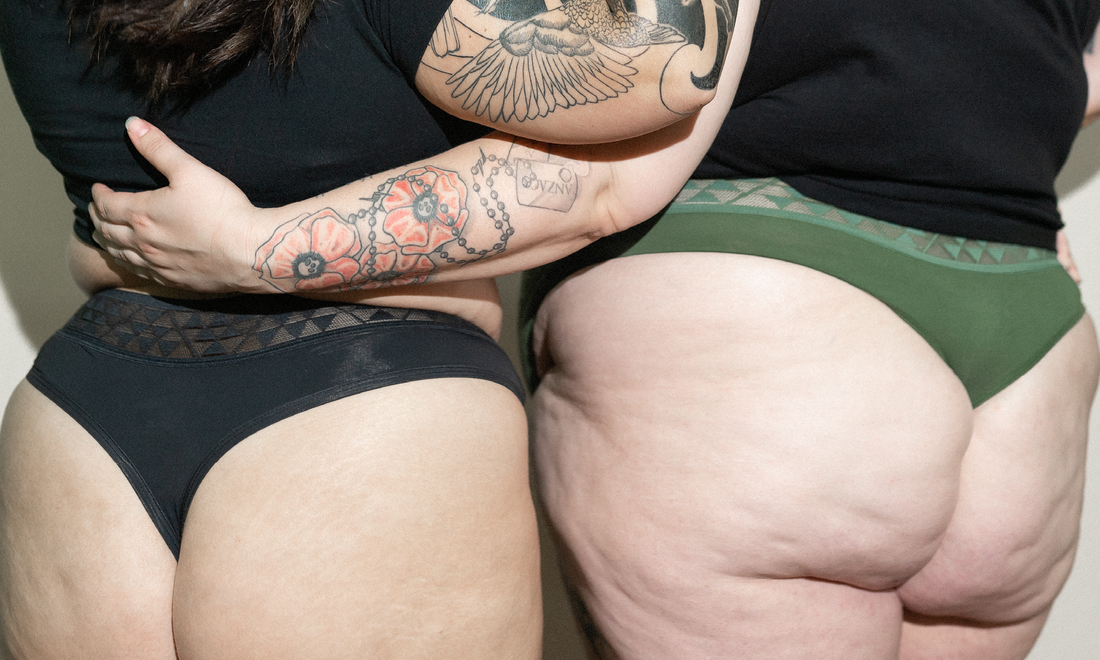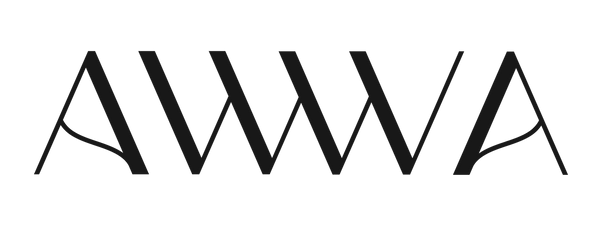
Plus Size Period Underwear
Help me find my size!
Trying to find clothing in your size without a side-serving of shame or judgement? Me too.
For a long time I was thin. I wore a size 12 and could find clothes that fit me in most stores. I remember one fancy store in Sydney that firmly informed me they had nothing for my body but that was an anomaly. Trouble was, I also had an eating disorder. Being thin and being bulimic went hand-in-hand for years that soon added up to decades. Then, when I no longer had the eating disorder, my body changed. I currently wear a size 18.
Finding clothes, underwear, even shoes and jewellery as a plus-size person is much more difficult. It’s not impossible but it takes know-how. It’s useful to have a community to call on for advice so I am part of a plus-size fashion group hosted by Monique Doy (Tāmaki-based stylist) called “Own Your Style”. We are constantly asking one another for recommendations or re-selling our own clothes.
It's amazing to think that up until the Industrial revolution we had no real need to label our bodies in comparison with other bodies. We made our own clothes or had clothes made for us. There was no need for “small”, “medium”, or “large”. Clothes were made for our specific proportions. We rarely had to think about someone else’s size or shape compared to our own. Because what is the term “plus-size” if not a comparison? “Plus-size” surely only exists if there is “normal-size” or a “regular-size”, right? Plus what?
Many people have tried to create language that deviates from traditional labels but that’s not always helpful either. Certain clothing labels create their own sizing systems, describing sizes as “Magnifique” or “Bodacious”. Trouble is: it takes time to work out what size you are within their system and their system doesn’t easily transfer to any other brand. As Aubrey Gordon (commonly known as “Your Fat Friend”) writes: “Not “curvy” or “chubby” or “chunky” or “fluffy” or “more to love” or “big guy” or “full-figured” or “big-boned” or “queen size” or “husky” or “obese” or “overweight.” Just say fat.”
“Fat” has been reclaimed by fat activists as a descriptor without judgement or loaded meaning. It mirrors a similar reclamation of the word “black”. When I explain to my young daughters how I use the word “fat” I say it is the same as “blue” or “square”. Any extra meaning heaped on top is simply evidence of anti-fat bias - internalised or otherwise.
But will using “fat” in my google search help me find clothes to fit my body? If not, what else?
Currently I use “plus-size” in my searches or only go to websites I know stock my size. The fact that AWWA makes up to a 6XL (NZ size 26) and discloses specific measurements for all its styles makes it an easy win. It’s especially nice not to be reduced to one or two styles from the full range. I can’t wait for the day when this is the norm rather than trailblazing. You can shop their plus size range here.
One day we’ll have better search terms at our disposal but it will probably only happen when we are ready to examine how we judge bodies – size, ethnicity, gender identity and otherwise. Considering how we talk about bodies requires us to consider how we think about bodies. It requires examining how we normalise and marginalise. What is considered “okay” and what is “other”, “extraordinary”, “radical” or “unacceptable”? What has led us to these judgements? Societal change and language change tend to slot together, hand in glove. Until then we have to find our trailblazers and give them our encouragement.
Ka pū te ruha, ka hao te rangatahi.
(As an old net withers a new one is made)
Words by Hannah Tunnicliffe

